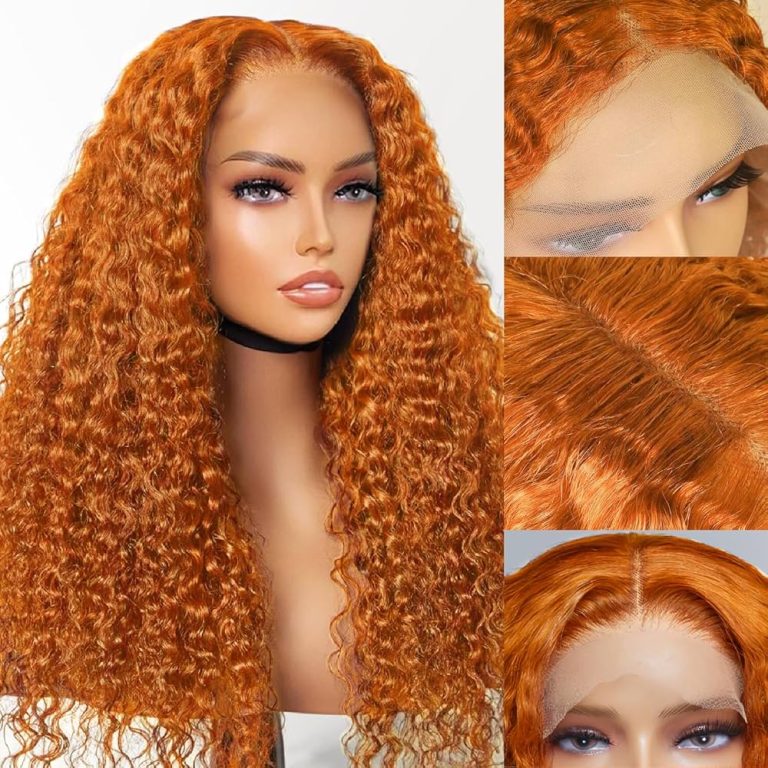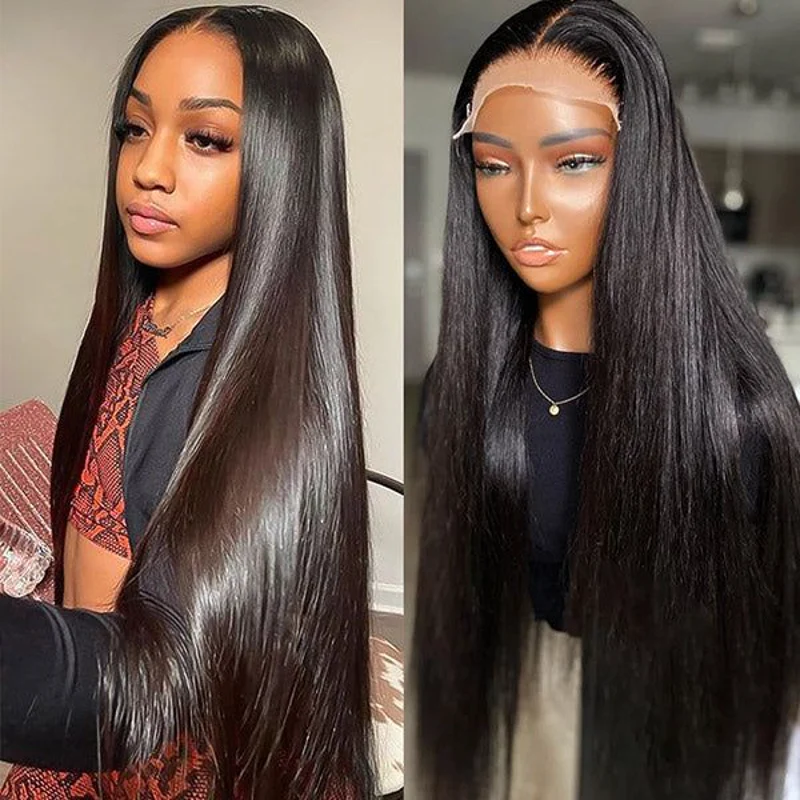
The Ultimate Guide to Lace Frontal Wig
What Are Lace Frontal Wigs?
Lace frontal wig have revolutionized the hair industry. These innovative hairpieces offer a natural-looking hairline and versatile styling options. Lace frontal wigs consist of a lace panel that extends from ear to ear across the forehead. This panel contains individually hand-tied hairs, creating the illusion of natural hair growth. The rest of the wig cap typically features machine-made wefts for added volume and fullness.
Lace frontals come in various sizes, usually 13×4 inches or 13×6 inches, providing ample coverage for different styling needs. The lace material used in these wigs is often Swiss lace or HD lace, known for their durability and ability to blend seamlessly with the wearer’s skin tone. Additionally, lace frontal wigs can be made from human hair or synthetic fibers, each offering unique benefits and characteristics.
The Benefits of Lace Frontal Wigs
Lace frontal wigs offer numerous advantages for wig enthusiasts. First and foremost, these wigs provide an incredibly natural-looking hairline, which is often indistinguishable from one’s own hair. This feature allows wearers to style their hair in various ways, including updos and ponytails, without worrying about exposing the wig cap. Furthermore, lace frontal wigs offer excellent breathability, ensuring comfort during extended wear.
The lightweight nature of the lace material prevents scalp irritation and promotes air circulation. Another significant benefit is the versatility in styling options. Wearers can part their hair in multiple directions and experiment with different looks. Lace frontal wigs also provide ample coverage for those experiencing hair loss or thinning, boosting confidence and self-esteem. Additionally, these wigs are relatively easy to maintain and can last for an extended period with proper care.
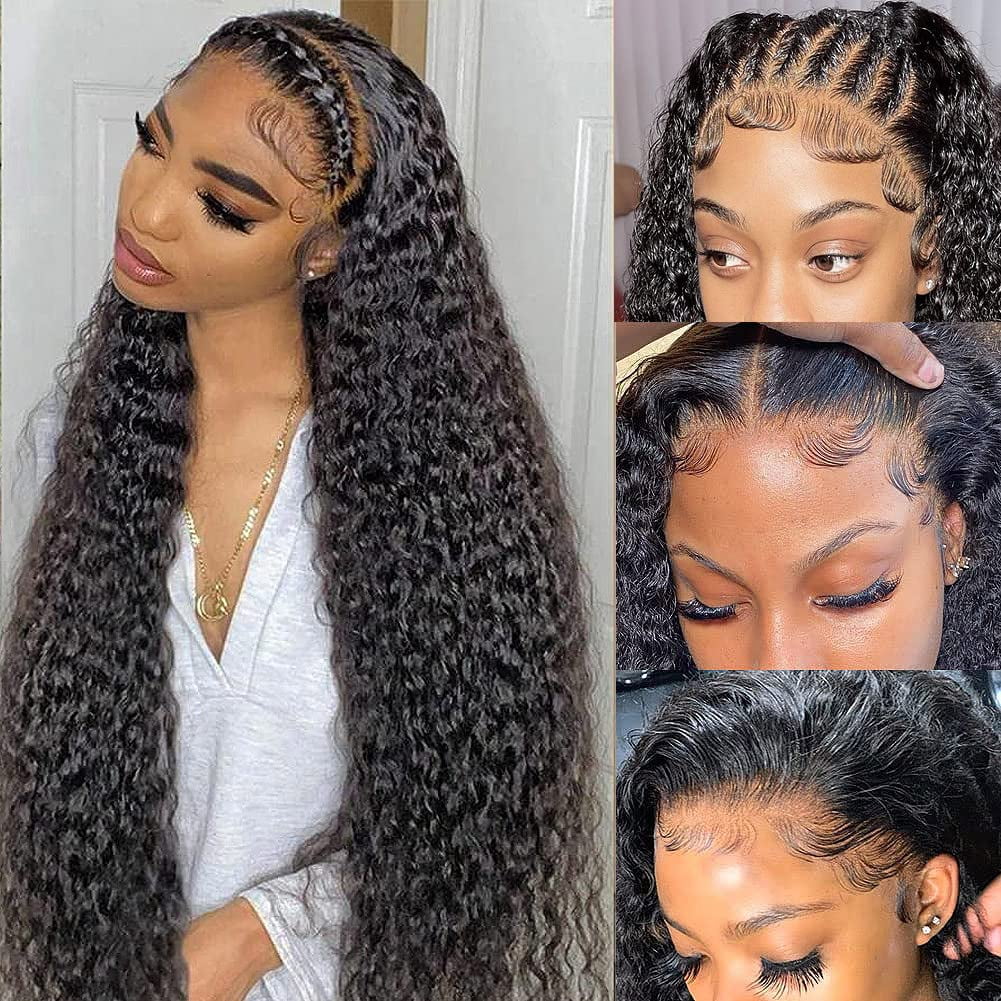
How to Choose the Right Lace Frontal Wig
Selecting the perfect lace frontal wig requires careful consideration of several factors. Firstly, determine the desired hair type – human hair or synthetic fibers. Human hair wigs offer the most natural look and feel but require more maintenance and come at a higher price point. Synthetic wigs, on the other hand, are more affordable and easier to maintain but may lack the natural movement of human hair. Next, consider the hair color and length that best suits your style and complexion.
Many lace frontal wigs come in a variety of shades and lengths, allowing for customization. The density of the wig is another crucial factor to consider. Opt for a density that matches your natural hair or desired look. Additionally, pay attention to the cap construction and size to ensure a comfortable and secure fit. Lastly, consider the lace color and type, choosing one that closely matches your skin tone for a seamless blend.
Proper Installation Techniques for Lace Frontal Wigs
Installing a lace frontal wig correctly is crucial for achieving a natural look. Begin by preparing your natural hair by braiding it flat against your scalp or using a wig cap. Next, trim the lace to fit your hairline, leaving a small amount of excess for adjustments. Apply a thin layer of wig adhesive or tape along your hairline, allowing it to become tacky before application. Carefully place the wig on your head, aligning the frontal with your natural hairline.
Press the lace gently into the adhesive, working from the center outward. Once secured, style the baby hairs along the hairline for a more natural appearance. Use a hot tool to melt the lace into your skin, creating an seamless blend. Finally, style the wig as desired, using heat protectant products if applying heat. Remember to be patient and take your time during the installation process to achieve the best results.
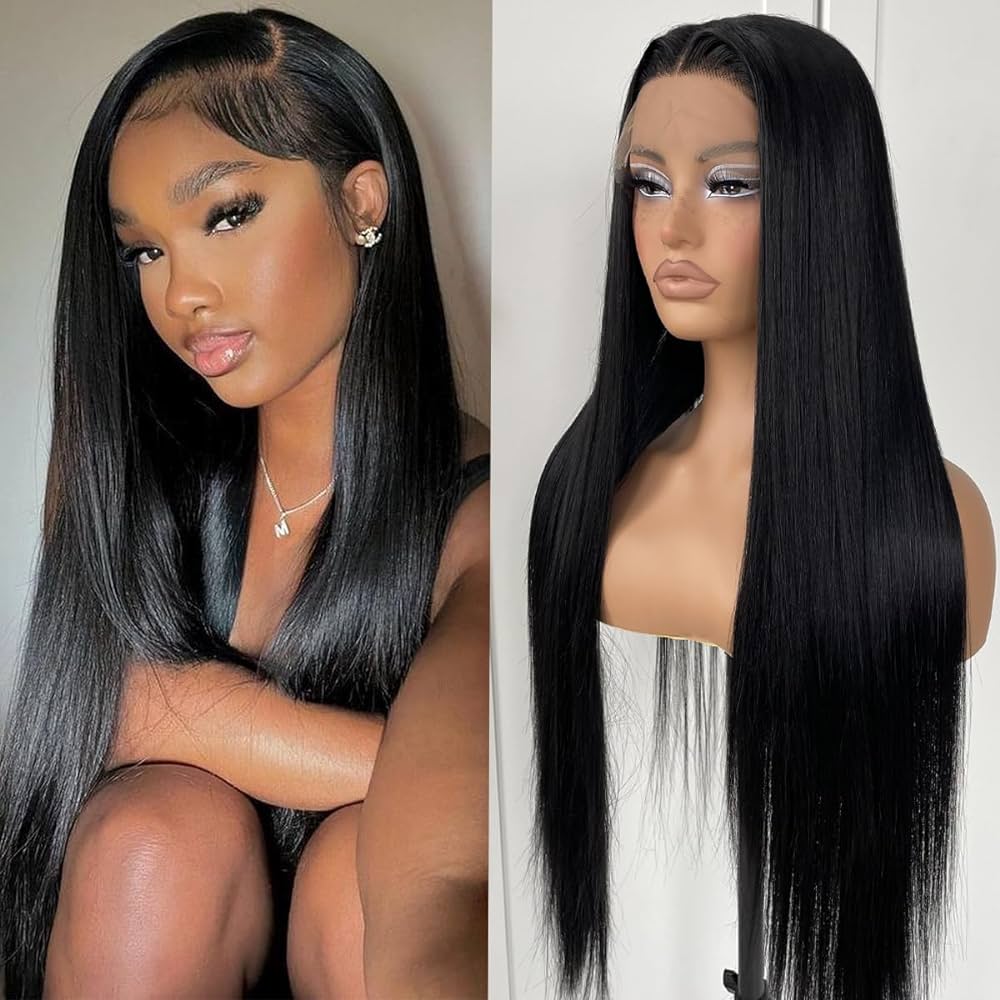
Styling Tips for Lace Frontal Wigs
Lace frontal wigs offer endless styling possibilities. For a sleek look, use a flat iron to straighten the hair, working in small sections. Apply a heat protectant spray beforehand to prevent damage. To create beachy waves, use a curling wand or overnight braids. Experiment with different parting styles to change up your look. Middle parts offer a classic, symmetrical appearance, while side parts can add volume and frame the face.
For updos, gently gather the hair into a ponytail or bun, being careful not to put too much tension on the lace frontal. Use bobby pins to secure any loose strands. To add volume, tease the crown area gently with a fine-toothed comb. Remember to use styling products sparingly to avoid product buildup on the lace. When trying new styles, always be gentle to preserve the integrity of the wig and lace frontal.
Maintenance and Care for Lace Frontal Wigs
Proper maintenance ensures the longevity of lace frontal wigs. Wash the wig every 7-10 wears or when product buildup becomes noticeable. Use a sulfate-free shampoo and conditioner specifically designed for wigs. Gently cleanse the hair and lace, avoiding rubbing or twisting motions. Rinse thoroughly with cool water to maintain the wig’s shape. After washing, apply a leave-in conditioner to keep the hair soft and manageable.
Allow the wig to air dry on a wig stand, avoiding direct sunlight or heat sources. Between washes, use a wide-toothed comb or wig brush to detangle the hair gently, starting from the ends and working your way up. Store the wig on a wig stand or in a silk bag when not in use to maintain its shape and prevent tangling. Avoid sleeping or showering while wearing the wig to extend its lifespan. With proper care, a high-quality lace frontal wig can last for several months to a year.
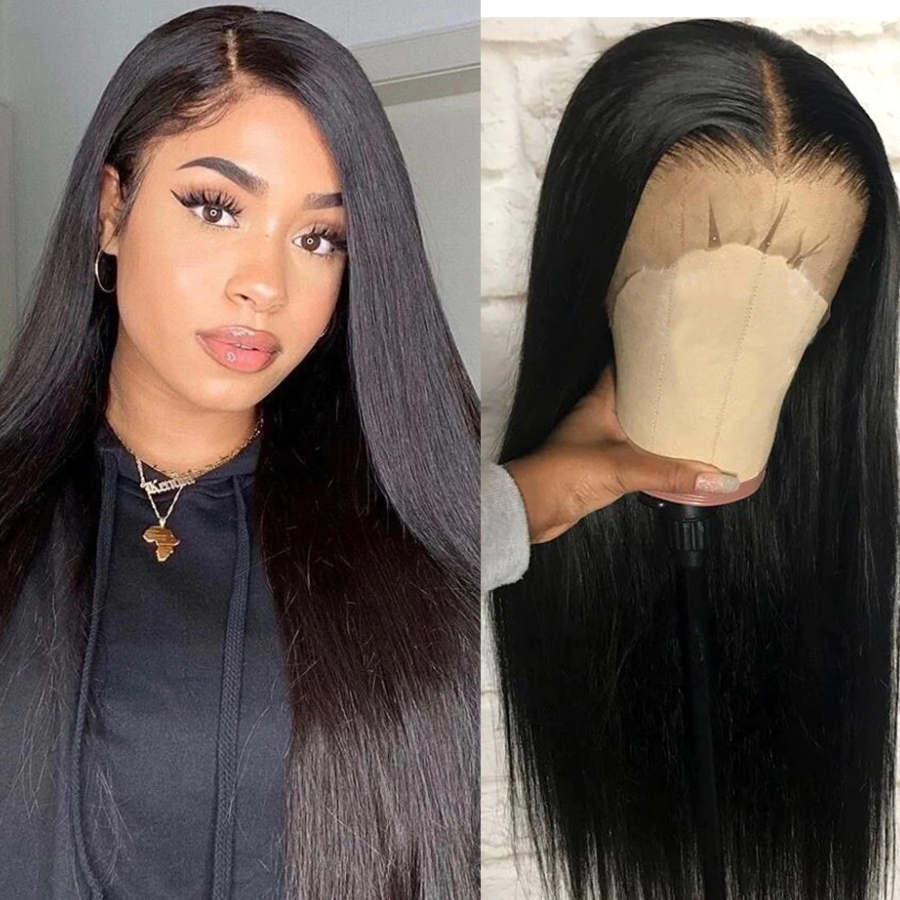
Common Challenges and Solutions
Despite their many benefits, lace frontal wigs can present some challenges. One common issue is visible lace, which can occur if the lace color doesn’t match the wearer’s skin tone. To address this, try using a tinted powder or foundation to blend the lace with your skin. Another challenge is lace lifting, where the edges of the lace begin to peel away from the scalp. This can be prevented by using a strong hold adhesive and avoiding excessive oil or sweat on the hairline.
Tangling and matting, especially in human hair wigs, can be minimized by regular gentle brushing and avoiding sleep in the wig. If the wig becomes dry or frizzy, deep condition it or use a leave-in treatment to restore moisture. Shedding can be reduced by sealing the wefts with a liquid seam sealer. For synthetic wigs that have lost their style, use low heat and a wig-safe styling product to reshape them.
Customizing Lace Frontal Wigs
Customization allows wearers to make their lace frontal wigs truly unique. Start by plucking the hairline to create a more natural-looking density. Use tweezers to gently remove hairs from the lace, focusing on creating a gradual transition from the hairline to the fuller part of the wig. Bleaching the knots on the lace can help camouflage the small dark dots where the hair is tied to the lace. This process requires careful application of bleach to avoid damaging the lace or hair.
Adding baby hairs along the hairline can enhance the natural appearance of the wig. Use a small brush or toothbrush to style these fine hairs with a styling gel. For a personalized color, consider dyeing the wig. Human hair wigs can be colored like natural hair, while synthetic wigs require special synthetic-safe dyes. Always perform a strand test before fully committing to a new color. Remember, customization requires patience and practice to achieve the desired results.
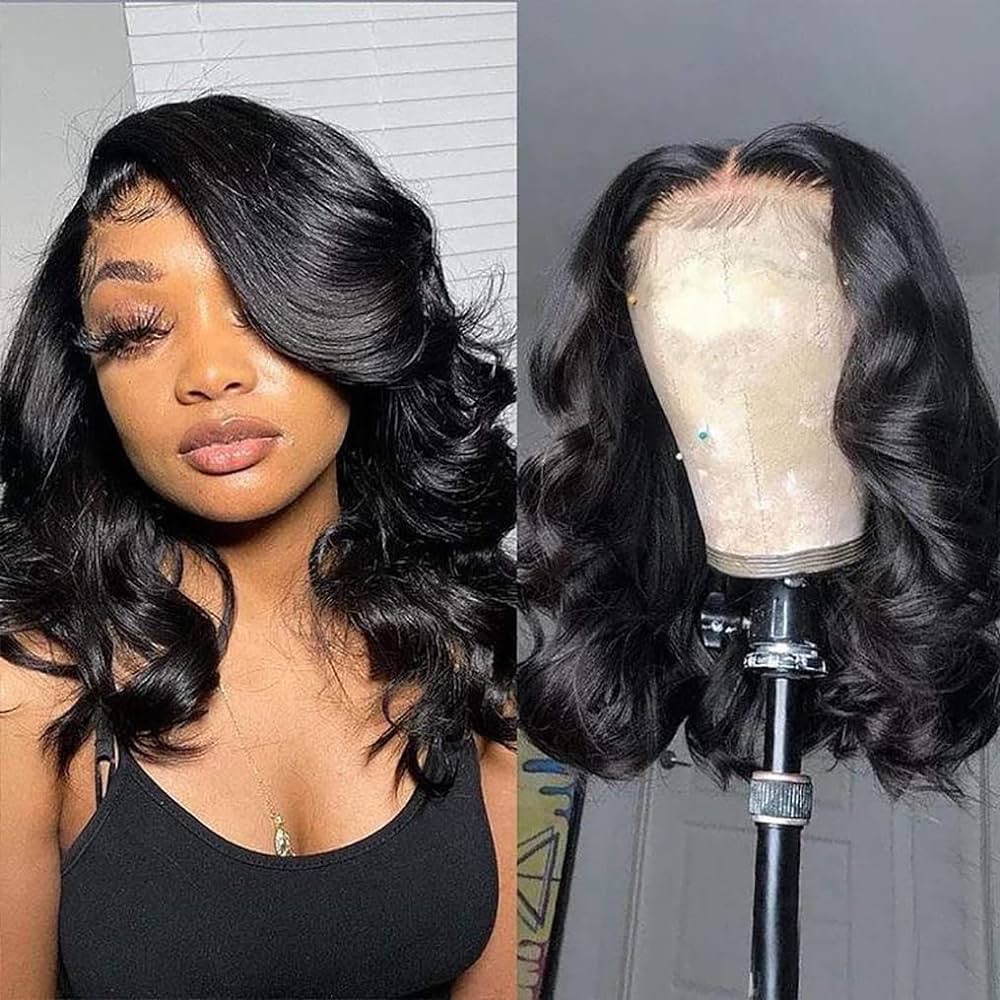
The Future of Lace Frontal Wigs
The lace frontal wig industry continues to evolve, with exciting innovations on the horizon. Advancements in lace technology promise even more undetectable and durable frontals. New types of lace, such as HD lace and transparent lace, offer improved blending capabilities. The development of more realistic synthetic fibers may soon rival the look and feel of human hair at a fraction of the cost. Smart wigs, incorporating technology for temperature regulation and style memory, could revolutionize the wearing experience.
Eco-friendly manufacturing processes and sustainable materials are likely to become more prevalent, appealing to environmentally conscious consumers. Customization options may expand, allowing for more personalized fits and styles through 3D printing technology. As the demand for high-quality, natural-looking wigs grows, the industry will likely see continued innovation in application methods, adhesives, and care products. These advancements will make lace frontal wigs an even more attractive option for those seeking versatile and realistic hair solutions.
Conclusion: Embracing the Versatility of Lace Frontal Wigs
Lace frontal wigs have transformed the way people approach hair enhancement and styling. These versatile hairpieces offer a natural look, comfort, and endless styling possibilities. From choosing the right wig to proper installation and maintenance, mastering the art of lace frontal wigs opens up a world of beauty options. As technology advances, these wigs will only become more realistic and user-friendly. Whether used for fashion, necessity, or confidence-boosting, lace frontal wigs provide a solution for various hair needs. By understanding the ins and outs of these innovative hair systems, wearers can fully embrace their potential and enjoy the freedom to express themselves through their hair. The future of lace frontal wigs looks bright, promising even more exciting developments in the world of hair enhancement.

